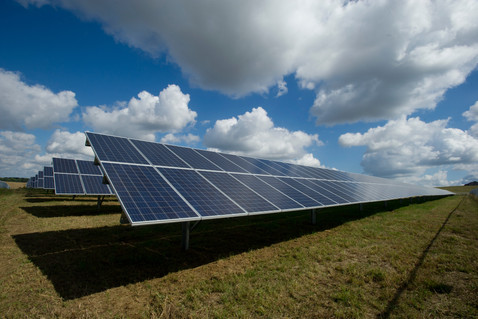Batteries: A powerful tool to combat climate change.
- Team Geyser

- May 12, 2020
- 4 min read
Updated: Aug 21, 2020
If there is one thing the COVID-19 crisis hasn't affected - or at least shouldn't affect - it's this: The worldwide focus on fighting climate change.

In December 2015, 195 countries adopted the first-ever universal, legally binding global climate deal: the Paris agreement. The purpose is to avoid the dangerous effects of climate change by limiting global warming to well below 2°C. As a consequence of the Paris agreement, governments across the globe and the European Commission, in particular, are pushing for ever-tighter binding targets across virtually all industries to cut greenhouse gas emissions.
Indeed, reducing greenhouse gas emissions is one of the top priorities of humanity in the 21st century. Some countries try to nudge people to use public transportation more, some ban production sites and among some people flying has become uncool. Despite all that, we still constantly burn fossil fuels, cut down rainforests and farm livestocks. This adds enormous amounts of greenhouse gases to those already naturally occurring in the atmosphere, increasing the greenhouse effect and global warming. How we solve this is obviously still a major question mark but one thing that seems clear is that innovation and breakthrough tech is essential to improve our situation. Here, we will explain how something as underestimated in the public mind as a battery can play a key role in avoiding greenhouse gas emissions.
Getting the right energy.
Let’s remind ourselves that traditional energy requires the burning of fossil fuels (natural gas, coal and oil). Additionally, there is an energy-consuming process of finding, excavating and transporting it. In contrast, renewable energy (solar, wind, hydro, geothermal and biomass) is abundant, but we have to be smart enough to capture and use it. The only problem is that supply is quite irregular: the sun does not shine 24 hours a day, and the wind does not blow constantly. Therefore, we need to store energy during peak production and release it during the “quiet” time. Hence, the more renewable energy we would like to use, the more megawatt-hours of energy storage we would need to install.
Getting the energy right.
Once the power grid is capable of channeling abundant renewable energy to the user, the next task is to store it and use it autonomously. Naturally, batteries are the key instrument, but other avenues are explored too. Excess of the renewable energy may for example be used to generate hydrogen from water and use it as a fuel.
Still a large number of machines that do not have frequent enough access to the power grid (meaning it can not be charged often or for long enough). As an example, road transport itself is responsible for 72% of greenhouse gas emissions of the entire transport sector. There is still a huge reliance on combustible fuel, and the only thing that engineers can improve at the moment is to ensure that the energy of every drop of fuel burnt is used efficiently and never lost. Nowadays, when the efficiency of combustion engines is already at its maximum, the only way is hybridization of internal combustion engines with battery-powered electric traction.
Another example is hybrid powertrains. The main goal here is to decrease fuel consumption by minimizing losses and ensuring maximum productivity of the internal combustion engine. The battery acts as an energy buffer. On the one hand, it spares the energy that is regenerated when, for example, the machine is slowing down (instead of wasting it as heat in your conventional brakes). On the other hand, it provides peak power when, for example, a car accelerates, allowing it to get away with smaller motors that are then always operating at an ideal workload, hereby maximizing their energy efficiency. As a result, the end user enjoys reduced fuel costs and decreased greenhouse gas emissions while increasing engine lifetime.
As a side note, as long as we are on this topic, hybridization with batteries is crucial for implementation of hydrogen fuel cell drivetrains too. We will touch more on the topic of hybrids in our blog very soon.
So, how do batteries help us fight climate change?
Batteries are the main drivers of productivity inside a car, heavy machinery, and a power plan. As an example, in hybrid cars, the main goal is to decrease fuel consumption by making the car more efficient and its battery acts as energy storage which spares the energy that is regenerating while you slow down (instead of wasting it as heat in your conventional brakes). The major benefit of the hybridization of an internal combustion engine with a battery buffer comes from the fact that it too allows electric motors to operate at an ideal workload maximizing their energy efficiency. As a result, similar to hybrid powertrains, this will reduce fuel costs and greenhouse gas emissions while increasing engine lifetime.

Graph from European Environmental Agency.
Currently, the EU is aiming to bring greenhouse gas emissions to at least 40% below the 1990 levels by 2030. We are moving away from polluting the environment and replacing it with renewable sources like solar and wind. Hence, the 2020s will set new challenges and demand different performance characteristics from an entire energy production chain globally. This change will not happen fast - but we are on the right path.
In our following blog posts, we will take a closer look into the batteries applications usage across different fields.
-Team Geyser




Comments